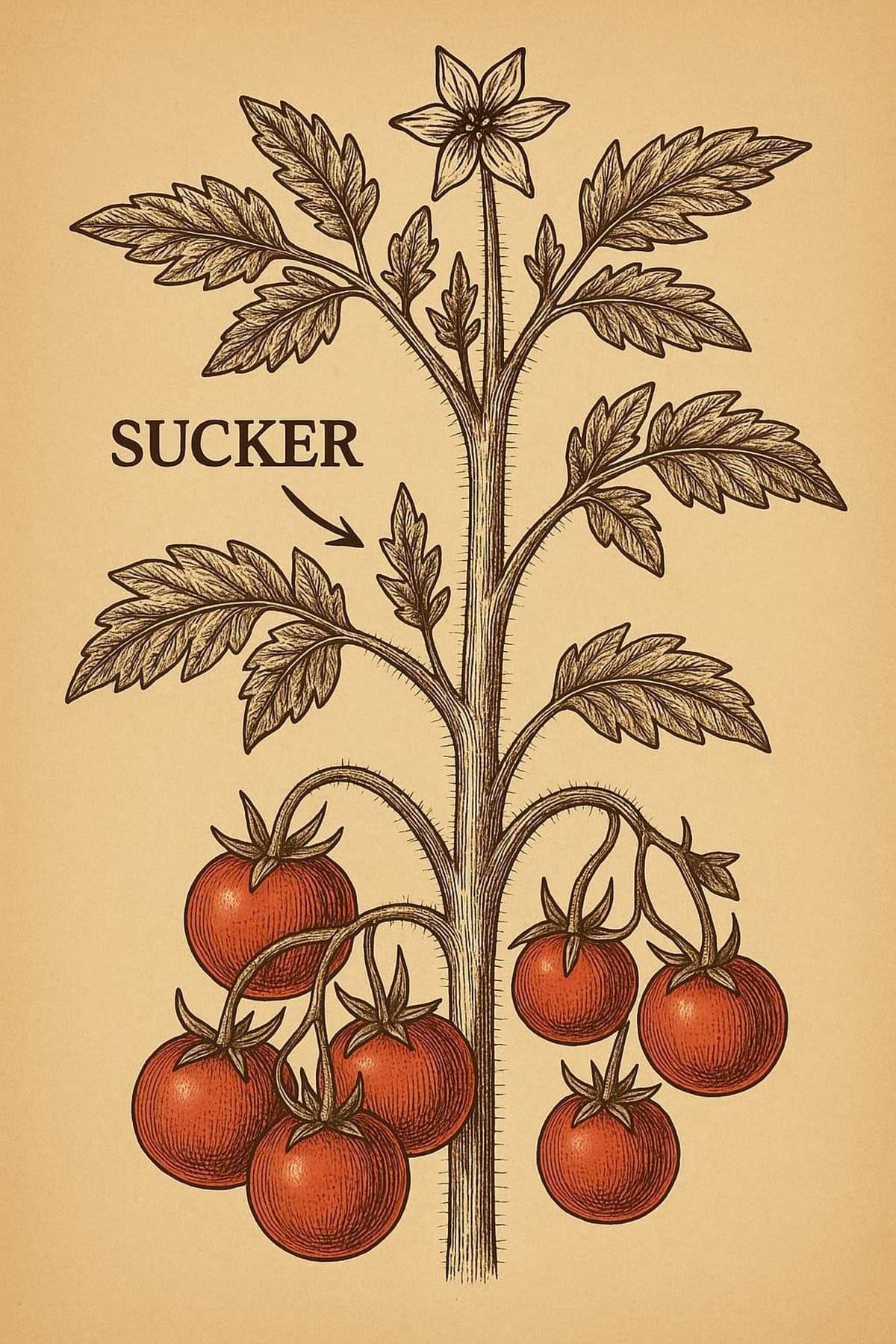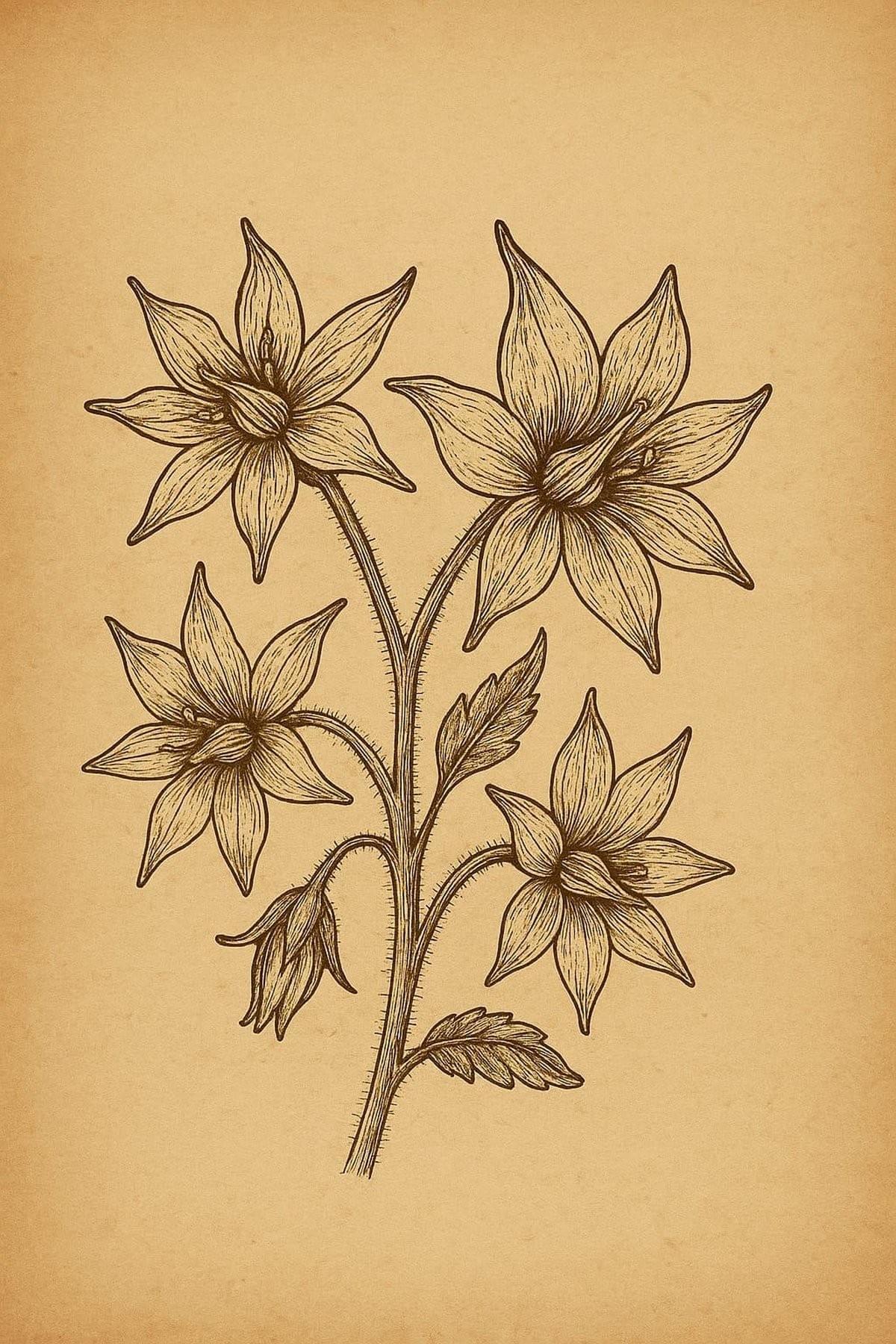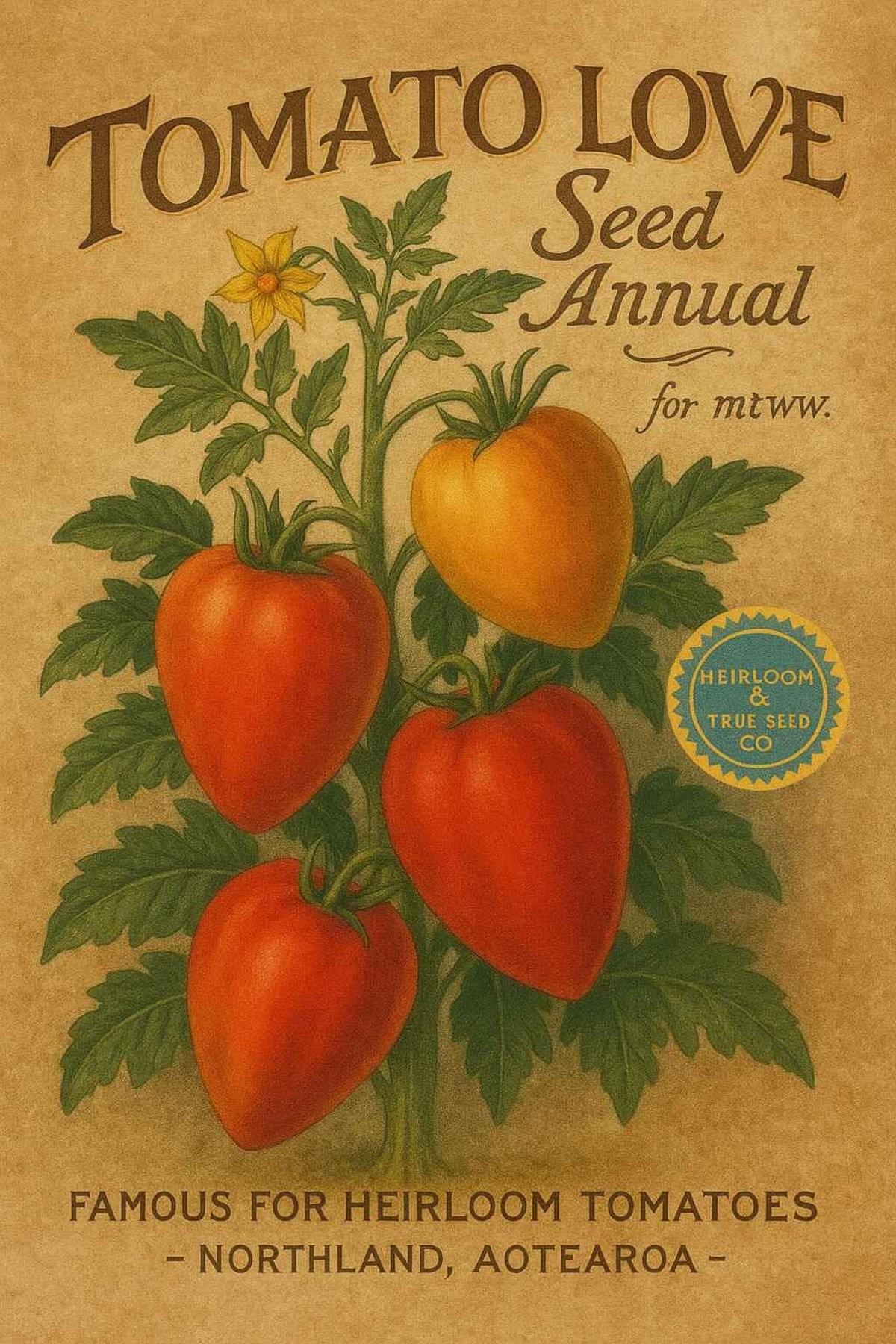

Hokianga Heirloom Tomatoes
Tomato Suckers
Keep Them? Cut Them? Clone Them?
Do tomato suckers sap energy from the plant?
Nope — not in the way most people think. Suckers are simply extra stems that form in the joint between a leaf and the main stem. If your plant is healthy and well-fed, it can absolutely support them. But if left unchecked, they can grow into a wild, tangled tomato jungle.
If you're aiming for cleaner growth, bigger fruit, or better airflow, pruning some suckers can help.
But if you love chaos, abundance, and experimentation — let them grow! I embrace a little of both.

If conditions are drought-like, I would leave on every single dam sucker. Here's why:
Last year during the drought, I had more than a few customers contact me about their tomato flowers failing to set. Dad knew what was going on, but I didn’t. He called it blossom drop.
Heat — and too much of it — can have a serious effect on tomato blossoms. Under high temperatures, the male reproductive organs dry out. The pollen becomes sterile. Say goodbye to fruit set.
Thankfully, you'll get another chance when the next wave of suckers comes through — one of the best reasons to leave them alone.
Research shows that when temperatures climb above 32°C for several consecutive days, the male reproductive structures begin to change. They produce less fertile pollen. Their appearance shrivels. The flowers literally fall off.
Hence the name: blossom drop.

So when should I remove suckers?
Indeterminate tomato plants can get out of hand quickly with their suckers producing more suckers and so on. If you're in an area that has limited growing room, then pruning suckers can be of benefit making it easier to stake and manage growth.
Yes, removal of the sucker and having less of a giant mass of mess will improve air circulation and lower the risk of disease, particularly in areas that are hot and humid, making conditions perfect for foliar diseases to thrive. Added bonus is that predatory insects can move more freely.
When not to prune.
Determinate varieties of tomatoes only have a limited amount of flowers to offer. Their genetics are preset in each variety, having a determined height and width, and finally setting their flowers at only the ends of the branches.
Perfect for the tidy gardener, someone who has limited growing room. Remember that any removal of suckers is going to reduce your yield.

Topping as the end of season nears.
Most tomato plants form flowers at the very top late in the season — often too late for the fruit to ripen.
Topping helps redirect energy, reduces top-heaviness, and keeps your plant within the height of its stake or cage.
Use sharp secateurs and make a clean cut just above a leaf node — ideally above a flower cluster you want to keep.
Once topped, expect an explosion of lateral growth — and be prepared to manage it.
Extend your crop yields by using your suckers.
Snipping 6-inch suckers from your earliest plants is a brilliant — and free — way to extend your tomato season.
This method works especially well if you're lucky enough to live somewhere with a long growing window. Just pop the suckers in water and place them on a shaded windowsill until roots appear. Then plant them out — and give yourself a pat on the back.
This technique, called “staggering,” can send your yields through the roof.
I usually plant mine in a different spot from my first crop. That way, if disease hits, I’ve still got a backup — and a second round of tomatoes to look forward to.
Yes, you can have more than one garden!
Bonus freak information.
Suckers can also act like little umbrellas for your tomatoes. While they don’t need heaps of sun to ripen, too much can cause sunscald, especially on exposed fruit. That’s why some older varieties, like Cherokee Purple, were naturally protected with broader leaf cover. If you've ever seen tomatoes with brown “shoulders,” it’s often from too much sun.
Sadly, many supermarket varieties today are bred for travel, not taste. Give the old school varieties a chance, they will surprise you.
“Whiria te tāngata, tōitu te mātauranga”— If you weave the people, you weave their knowledge
Powerful reminder that our differences are not our barriers but rather sources of strength and resilience when we choose to connect and learn from eachother.
© 2025 Tomato Love | Epic Tomato Source for heirloom seeds and seedlings grown in Hokianga. Cultivated with love, history, and mana.
“He iti, he pounamu.”



